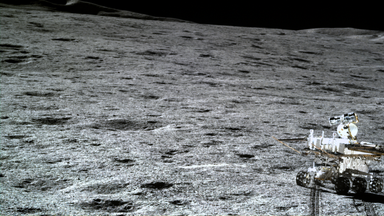Coastal hurricanes in the U.S. will become "more destructive" due to climate change, according to a new study.
A new study led by researchers at the Department of Energy's Pacific Northwest National Laboratory in Washington found that hurricanes worldwide have been becoming more severe at a "quickening pace" since 1979.
Read more: Emergency Funds: How to Build One and Where to Keep It
To reach these findings, the authors looked at global hurricane data between 1979 and 2000. They discovered that these storms intensified at an average rate of 0.37 knots every six hours from 2000 to 2020, and then intensified by 1.15 knots every six hours.
"This work holds profound implications for people living on the coast, as well as operational forecasters and decision-makers," said co-author and Earth scientist Ruby Leung. "The rising intensification rates we observed could mean that landfalling hurricanes are on track to grow stronger and thus more destructive. It's important that we understand how the risks posed by these storms could change as our climate changes."
Researchers believe that these rates will only continue to increase should the current warming conditions continue.
Hurricanes are caused by several environmental factors, including warm ocean temperatures. Most begin with a tropical wave that moves through the tropics, causing thunderstorms. A combination of these warm tropical temperatures and winds can result in these intense storms.
Climate change is causing warmer global temperatures, and much of this increased heat is absorbed into the ocean, meaning the ideal conditions for hurricanes are becoming more frequent.
Previous studies have examined the increase in extreme weather events with climate change. However, the authors note that this is the first work to focus on how coastal hurricanes are increasing in severity on a global scale.
After delving deeper into their findings, the researchers found that between 1979 to 2000, hurricanes may have started smaller and then increased by 1.5 knots over one day. After 2000, it became more common for hurricanes to begin at one intensity and increase by 4.5 knots over the same day.
The new study reports that as the world continues to warm all of the world's coastlines are likely to see very intense hurricanes, unlike ones seen before.
"We're not talking about intensification out in the middle of the ocean," lead author and climate scientist Karthik Balaguru said in a statement. "We're talking about it happening right at the coastline, where it matters most."
Hurricanes can be extremely destructive to populated areas. And as they become more intense, this becomes more of a concern. They can cause damage to buildings, severe flooding and even loss of life.
What is perhaps more concerning, is that experts have predicted a very active year for hurricanes in 2024. In April, researchers at North Carolina State University predicted that this hurricane season will bring 15 to 20 named storms to the Atlantic.
The predictions mark a notable increase in several averages. The long-term average for named storms, which is calculated between 1951 and 2023, is 11, while the more recent average, which is calculated between 1994 and 2023, is 14.
Do you have a tip on a science story that Newsweek should be covering? Do you have a question about hurricanes? Let us know via science@newsweek.com.
Disclaimer: The copyright of this article belongs to the original author. Reposting this article is solely for the purpose of information dissemination and does not constitute any investment advice. If there is any infringement, please contact us immediately. We will make corrections or deletions as necessary. Thank you.


